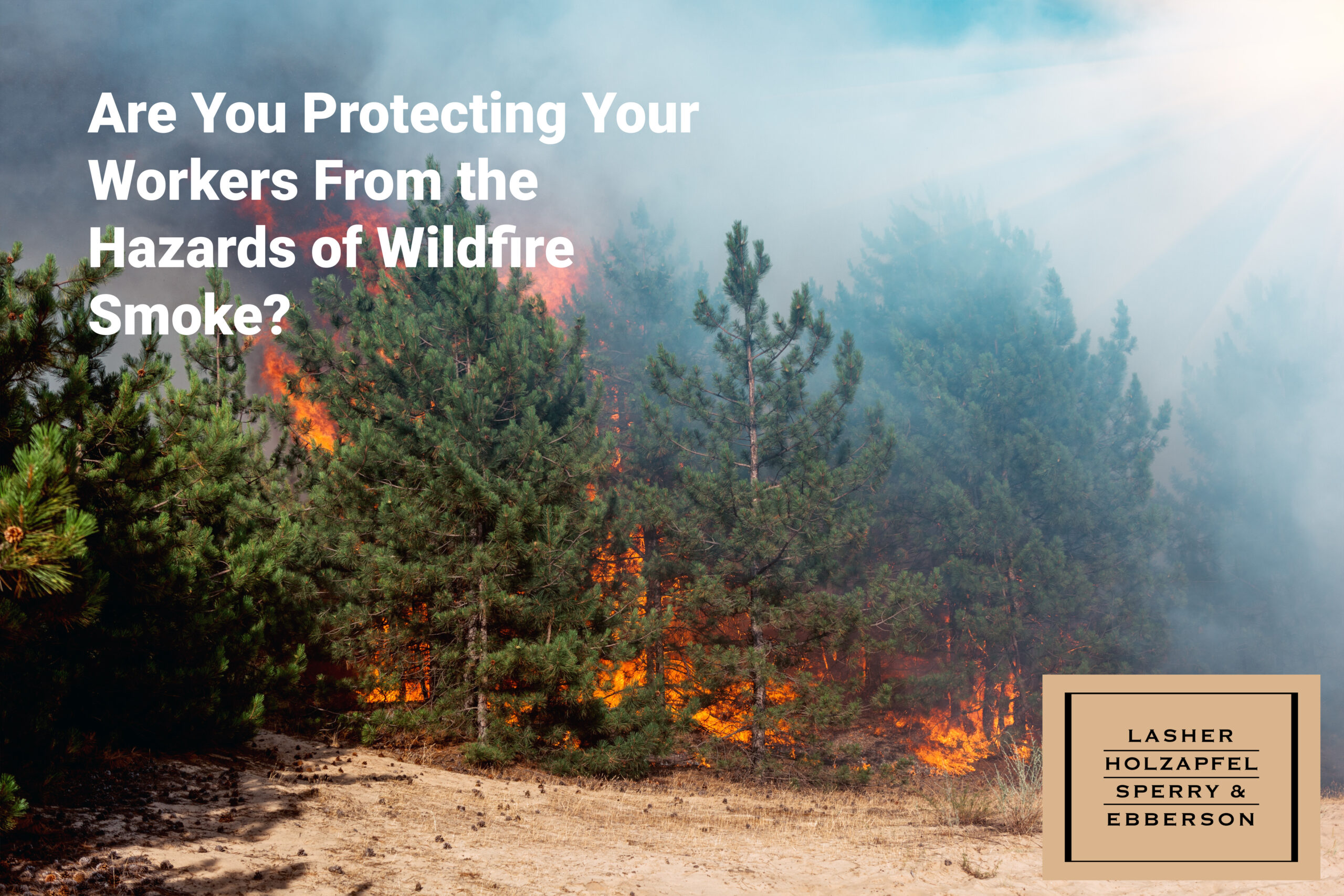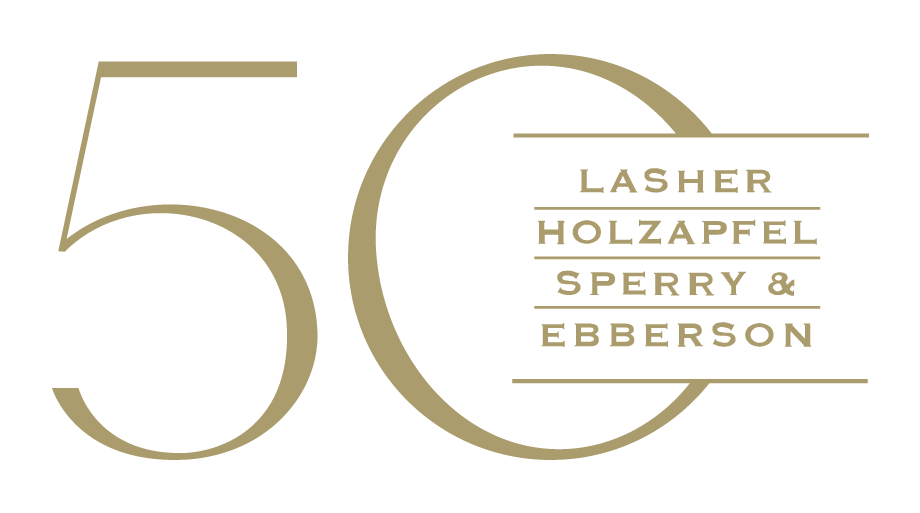Are You Protecting Your Workers From the Hazards of Wildfire Smoke?

Posted on March 26, 2024 by James Blankenship
With summer just around the corner, it is time for employers with outdoor employees to make sure they are complaint with Washington’s new wildfire smoke regulations. This winter, Washington Labor and Industries promulgated new permanent regulations requiring employers to take a number of steps to protect workers from the hazards of wildfire smoke.
The new regulations apply to all workplaces, except workplaces that conduct business in enclosed buildings , or if employees conduct business primarily from an enclosed vehicle. Firefighters and workers performing prescribed burns are also excluded. The regulation measures air quality using both PM2.5 (a measure of particles and liquid droplets in the air) and AQI (Air Quality Index as used by the Environmental Protections Agency and for purposes of the regulation is the NowCast AQI for PM2.5).
If an employer will have employees working outdoors when the employee may be exposed to wildfire smoke, the employer must have a written response plan, provide wildfire smoke training to employees, monitor conditions and forecasts, prepare a two-way communication system, and make provisions for prompt medical attention for employees.
Once the PM2.5 reaches 20.5 or the AQI is 69 additional steps are required to detailed in the following table.
| CURRENT PM2.5 | AQI | REQUIREMENTS AT CURRENT PM2.5 LEVEL |
| 0.0-20.4 µg/m3 | 0-68 | • Prepare a written wildfire smoke response plan. |
| • Provide wildfire smoke training to employees. | ||
| • Watch the PM2.5 conditions and forecasts. | ||
| • Prepare a two-way communication system. | ||
| • Make provisions for prompt medical attention, and permit such medical attention without retaliation. | ||
| 20.5-35.4 µg/m3 | 69-100 | All of the above and: |
| • Notify employees of PM2.5 conditions. | ||
| • Ensure only trained employees work outdoors. | ||
| • Consider implementing exposure controls. | ||
| • Consider providing voluntary use respirators. | ||
| 35.5-250.4 µg/m3 | 101-300 | All of the above and: |
| • Implement exposure controls. | ||
| • Make N95 respirators available for voluntary use. | ||
| 250.5-500.3 µg/m3 | 301-499 | All of the above and: |
| • Ensure workers experiencing symptoms requiring immediate medical attention be moved to a location that ensures sufficient clean air. | ||
| • Directly distribute N95 respirators to employees for voluntary use. | ||
| 500.4-554.9 µg/m3 | 500-beyond the AQI | All of the above and: |
| • Implement a complete required use respiratory protection program, including fit-testing, medical evaluations, requiring employees to be clean-shaven, and requiring the use of particulate respirators. | ||
| 555 µg/m3 | Beyond the AQI | All of the above and: |
| • Require respirators with an assigned protection factor (APF) of 25 or more. |
Training: Washington Labor and Industries has provided some sample training material within the regulation at WAC 296-820-850, but has yet to release sample templates or more traditional training materials. The training must cover health risks of wildfire smoke, symptoms that require immediate medication attention, employee reporting requirements, right to obtain medial attention without reprisal, right to use a respirator and how to use it, the employer response and monitoring plan, risks and benefits of respirator use. Training must be done annually.
Monitoring for Harmful Exposure: Washington has a number of online or mobile applications to provide current air quality information including: Washington Department of Ecology, various resources from the U.S. EPA, and local clean air agencies. The jobsite can also have onsite monitoring. One the jobsite reaches a PM2.5 of 20.5 (AQI 69), the employer must inform employees of the current conditions, ensure only employees with wildfire smoke training are working in these conditions, and provide N95 or other compliant respirators for voluntary use. As a practical matter, PM2.5 of 20.5 is not very high. In summer and fall of 2022, Seattle had approximately 15 days (depending on monitoring station) over the PM2.5 20.5 threshold and topped out with two days over 100. If you get closer to the Cascades the risk goes up, Darrington had approximately 23 days over the PM2.5 20.5 threshold and a max of PM2.5 255.9. For employers working in Eastern Washington the risk of wildfire smoke is generally higher, but varies greatly from year to year based on conditions and fire locations.
Respirator Use: At PM2.5 of 35.5 (AQI 101), the employer must make N95 or other compliant respirators available to employees. At a threshold of PM2.5 250.5 (AQI 301), N95 or other compliant respirators must be directly distributed to employees. Up to a PM2.5 of 500.3 (AQI 499), respirator use is still voluntary unless required by the employer. Once the worksite reaches PM2.5 of 500.4 (AQI 500), respirator use is required and the employer must comply with Ch. 296-842 WAC. Unless the employer regularly uses respirators, these requirements are going to be a significant burden on the employer to implement just for wildfire smoke, as the regulations require specific training, written programs, and fit testing.
Employers are encouraged to take steps now to prepare for wildfire season by completing your wildfire smoke response plan, training employees, and ensuring an adequate supply of N95 masks are available. If you have questions about these requirements or need help putting a plan together, please contact James Blankenship or any of the lawyers with Lasher’s Labor & Employment practice group.

